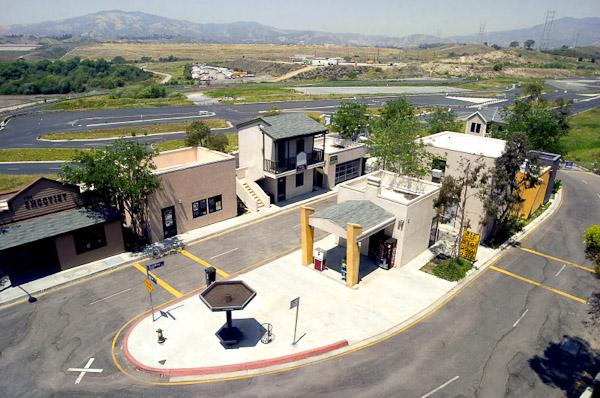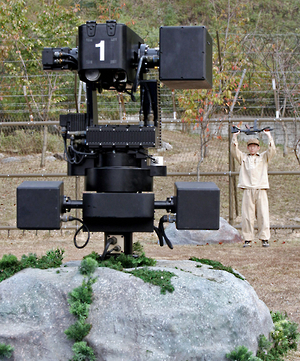Monday, December 10. 2012
The Relevance of Algorithms
Via Culture Digitally (via Christian Babski)
By Tarleton Gillespie
-----
I’m really excited to share my new essay, “The Relevance of Algorithms,” with those of you who are interested in such things. It’s been a treat to get to think through the issues surrounding algorithms and their place in public culture and knowledge, with some of the participants in Culture Digitally (here’s the full litany: Braun, Gillespie, Striphas, Thomas, the third CD podcast, and Anderson‘s post just last week), as well as with panelists and attendees at the recent 4S and AoIR conferences, with colleagues at Microsoft Research, and with all of you who are gravitating towards these issues in their scholarship right now.
The motivation of the essay was two-fold: first, in my research on online platforms and their efforts to manage what they deem to be “bad content,” I’m finding an emerging array of algorithmic techniques being deployed: for either locating and removing sex, violence, and other offenses, or (more troublingly) for quietly choreographing some users away from questionable materials while keeping it available for others. Second, I’ve been helping to shepherd along this anthology, and wanted my contribution to be in the spirit of the its aims: to take one step back from my research to articulate an emerging issue of concern or theoretical insight that (I hope) will be of value to my colleagues in communication, sociology, science & technology studies, and information science.
The anthology will ideally be out in Fall 2013. And we’re still finalizing the subtitle. So here’s the best citation I have.
Gillespie, Tarleton. “The Relevance of Algorithms. forthcoming, in Media Technologies, ed. Tarleton Gillespie, Pablo Boczkowski, and Kirsten Foot. Cambridge, MA: MIT Press.
Below is the introduction, to give you a taste.
Algorithms play an increasingly important role in selecting what information is considered most relevant to us, a crucial feature of our participation in public life. Search engines help us navigate massive databases of information, or the entire web. Recommendation algorithms map our preferences against others, suggesting new or forgotten bits of culture for us to encounter. Algorithms manage our interactions on social networking sites, highlighting the news of one friend while excluding another’s. Algorithms designed to calculate what is “hot” or “trending” or “most discussed” skim the cream from the seemingly boundless chatter that’s on offer. Together, these algorithms not only help us find information, they provide a means to know what there is to know and how to know it, to participate in social and political discourse, and to familiarize ourselves with the publics in which we participate. They are now a key logic governing the flows of information on which we depend, with the “power to enable and assign meaningfulness, managing how information is perceived by users, the ‘distribution of the sensible.’” (Langlois 2012)
Algorithms need not be software: in the broadest sense, they are encoded procedures for transforming input data into a desired output, based on specified calculations. The procedures name both a problem and the steps by which it should be solved. Instructions for navigation may be considered an algorithm, or the mathematical formulas required to predict the movement of a celestial body across the sky. “Algorithms do things, and their syntax embodies a command structure to enable this to happen” (Goffey 2008, 17). We might think of computers, then, fundamentally as algorithm machines — designed to store and read data, apply mathematical procedures to it in a controlled fashion, and offer new information as the output.
But as we have embraced computational tools as our primary media of expression, and have made not just mathematics but all information digital, we are subjecting human discourse and knowledge to these procedural logics that undergird all computation. And there are specific implications when we use algorithms to select what is most relevant from a corpus of data composed of traces of our activities, preferences, and expressions.
These algorithms, which I’ll call public relevance algorithms, are — by the very same mathematical procedures — producing and certifying knowledge. The algorithmic assessment of information, then, represents a particular knowledge logic, one built on specific presumptions about what knowledge is and how one should identify its most relevant components. That we are now turning to algorithms to identify what we need to know is as momentous as having relied on credentialed experts, the scientific method, common sense, or the word of God.
What we need is an interrogation of algorithms as a key feature of our information ecosystem (Anderson 2011), and of the cultural forms emerging in their shadows (Striphas 2010), with a close attention to where and in what ways the introduction of algorithms into human knowledge practices may have political ramifications. This essay is a conceptual map to do just that. I will highlight six dimensions of public relevance algorithms that have political valence:
1. Patterns of inclusion: the choices behind what makes it into an index in the first place, what is excluded, and how data is made algorithm ready
2. Cycles of anticipation: the implications of algorithm providers’ attempts to thoroughly know and predict their users, and how the conclusions they draw can matter
3. The evaluation of relevance: the criteria by which algorithms determine what is relevant, how those criteria are obscured from us, and how they enact political choices about appropriate and legitimate knowledge
4. The promise of algorithmic objectivity: the way the technical character of the algorithm is positioned as an assurance of impartiality, and how that claim is maintained in the face of controversy
5. Entanglement with practice: how users reshape their practices to suit the algorithms they depend on, and how they can turn algorithms into terrains for political contest, sometimes even to interrogate the politics of the algorithm itself
6. The production of calculated publics: how the algorithmic presentation of publics back to themselves shape a public’s sense of itself, and who is best positioned to benefit from that knowledge.
Considering how fast these technologies and the uses to which they are put are changing, this list must be taken as provisional, not exhaustive. But as I see it, these are the most important lines of inquiry into understanding algorithms as emerging tools of public knowledge and discourse.
It would also be seductively easy to get this wrong. In attempting to say something of substance about the way algorithms are shifting our public discourse, we must firmly resist putting the technology in the explanatory driver’s seat. While recent sociological study of the Internet has labored to undo the simplistic technological determinism that plagued earlier work, that determinism remains an alluring analytical stance. A sociological analysis must not conceive of algorithms as abstract, technical achievements, but must unpack the warm human and institutional choices that lie behind these cold mechanisms. I suspect that a more fruitful approach will turn as much to the sociology of knowledge as to the sociology of technology — to see how these tools are called into being by, enlisted as part of, and negotiated around collective efforts to know and be known. This might help reveal that the seemingly solid algorithm is in fact a fragile accomplishment.
~ ~ ~
Here is the full article [PDF]. Please feel free to share it, or point people to this post.
Tuesday, December 04. 2012
The Coldscape
Via Cabinet
-----
By Nicola Twilley
More than three-quarters of the food consumed in the United States today is processed, packaged, shipped, stored, and sold under artificial refrigeration. The shiny, humming stainless steel box in your kitchen is just the tip of the iceberg, so to speak—a tiny fragment of the vast global network of temperature-controlled storage and distribution warehouses cumulatively capable of hosting uncounted billions of cubic feet of chilled flesh, fish, or fruit. Add to that an equally vast and immeasurable volume of thermally controlled space in the form of shipping containers, wine cellars, floating fish factories, international seed banks, meat-aging lockers, and livestock semen storage, and it becomes clear that the evolving architecture of coldspace is as ubiquitous as it is varied, as essential as it is overlooked.

(...)
More about it and about a "perpetual winter" on Cabinet's website.
Related Links:
Electromagnetic Test Town
Via BLDGBLOG
-----
de noreply@blogger.com (Geoff Manaugh)

[Image: An otherwise only conceptually related photo by Steve Rowell shows the LAPD's Edward M. Davis Emergency Vehicle Operations Center & Tactics/Firearms Training Facility in Granada Hills, CA; courtesy of the Center for Land Use Intrepretation].
I was fascinated to read yesterday that a cyberwarfare training city is under construction, to be opened by March 2013, "a small-scale city located close by the New Jersey Turnpike complete with a bank, hospital, water tower, train system, electric power grid, and a coffee shop."
I envisioned whole empty streets and bank towers—suburban houses and replica transportation depots—sitting there in the rain whilst troops of code-wielding warriors hurl electromagnetic spells from laptops against elevator circuit boards, sump pumps, and garage doors, flooding basements, popping open underground gold vaults, and frying traffic lights, like some gonzo version of The Italian Job wed with the digital wizardry of a new sorcerer class, the "first-line cyber defenders" who will be trained in this place, our 21st-century Hogwarts along the freeway. Then they clean it all and start again tomorrow.
Alas. Although this, in many ways, is even more interesting, the entire "test city" truly is miniature: indeed, the whole thing "fits in a six by eight foot area and was created using miniature buildings and houses, [and] the underlying power control systems, hospital software, and other infrastructures are directly from the real world."
Nonetheless, this 6-x-8 surrogate urban world will be under near-constant microcosmic attack: "NetWars CyberCity participants, which include cyber warriors from the Department of Defense and other defenders within the U.S. Government, will be tasked with protecting the city's critical infrastructure and systems as they come under attack. Cyber warriors will be presented with potential real-world attacks; their job is to defend against them. Missions will include fending off attacks on the city's power company, hospital, water system and transportation services."
Which means, in the end, that this is really just an enlarged board game with an eye-catching press release—but there is still something compelling about the notion of an anointed patch of circuits and wifi routers, accepted as an adequate stand-in—an electromagnetic stunt double—for something like all of New York City, let alone the United States. A voodoo doll made of light, animated from within by packet switches, under constant surveillance in an invisible war.
(Via @pd_smith).
Monday, December 03. 2012
Ban ‘Killer Robots’ Before It’s Too Late
Via Human Rights Watch via Computed | Blg
-----
(Washington, DC) – Governments should pre-emptively ban fully autonomous weapons because of the danger they pose to civilians in armed conflict, Human Rights Watch said in a report released today. These future weapons, sometimes called “killer robots,” would be able to choose and fire on targets without human intervention.

The United Kingdom’s Taranis combat aircraft, whose prototype was unveiled in 2010, is designed strike distant targets, “even in another continent.” While the Ministry of Defence has stated that humans will remain in the loop, the Taranis exemplifies the move toward increased autonomy. © 2010 AP Photo
The 50-page report, “Losing Humanity: The Case Against Killer Robots,” outlines concerns about these fully autonomous weapons, which would inherently lack human qualities that provide legal and non-legal checks on the killing of civilians. In addition, the obstacles to holding anyone accountable for harm caused by the weapons would weaken the law’s power to deter future violations.
“Giving machines the power to decide who lives and dies on the battlefield would take technology too far,” said Steve Goose, Arms Division director at Human Rights Watch. “Human control of robotic warfare is essential to minimizing civilian deaths and injuries.”

The South Korean SGR-1 sentry robot, a precursor to a fully autonomous weapon, can detect people in the Demilitarized Zone and, if a human grants the command, fire its weapons. The robot is shown here during a test with a surrendering enemy soldier. © 2007 Getty Images
“Losing Humanity” is the first major publication about fully autonomous weapons by a nongovernmental organization and is based on extensive research into the law, technology, and ethics of these proposed weapons. It is jointly published by Human Rights Watch and the Harvard Law School International Human Rights Clinic.
Human Rights Watch and the International Human Rights Clinic called for an international treaty that would absolutely prohibit the development, production, and use of fully autonomous weapons. They also called on individual nations to pass laws and adopt policies as important measures to prevent development, production, and use of such weapons at the domestic level.
Fully autonomous weapons do not yet exist, and major powers, including the United States, have not made a decision to deploy them. But high-tech militaries are developing or have already deployed precursors that illustrate the push toward greater autonomy for machines on the battlefield. The United States is a leader in this technological development. Several other countries – including China, Germany, Israel, South Korea, Russia, and the United Kingdom – have also been involved. Many experts predict that full autonomy for weapons could be achieved in 20 to 30 years, and some think even sooner.
“It is essential to stop the development of killer robots before they show up in national arsenals,” Goose said. “As countries become more invested in this technology, it will become harder to persuade them to give it up.”
Fully autonomous weapons could not meet the requirements of international humanitarian law, Human Rights Watch and the Harvard clinic said. They would be unable to distinguish adequately between soldiers and civilians on the battlefield or apply the human judgment necessary to evaluate the proportionality of an attack – whether civilian harm outweighs military advantage.
These robots would also undermine non-legal checks on the killing of civilians. Fully autonomous weapons could not show human compassion for their victims, and autocrats could abuse them by directing them against their own people. While replacing human troops with machines could save military lives, it could also make going to war easier, which would shift the burden of armed conflict onto civilians.
Finally, the use of fully autonomous weapons would create an accountability gap. Trying to hold the commander, programmer, or manufacturer legally responsible for a robot’s actions presents significant challenges. The lack of accountability would undercut the ability to deter violations of international law and to provide victims meaningful retributive justice.
While most militaries maintain that for the immediate future humans will retain some oversight over the actions of weaponized robots, the effectiveness of that oversight is questionable, Human Rights Watch and the Harvard clinic said. Moreover, military statements have left the door open to full autonomy in the future.
“Action is needed now, before killer robots cross the line from science fiction to feasibility,” Goose said.
Personal comment:
It has obviously some deep link (contradiction) with the "Three Laws of Robotics" ...
fabric | rblg
This blog is the survey website of fabric | ch - studio for architecture, interaction and research.
We curate and reblog articles, researches, writings, exhibitions and projects that we notice and find interesting during our everyday practice and readings.
Most articles concern the intertwined fields of architecture, territory, art, interaction design, thinking and science. From time to time, we also publish documentation about our own work and research, immersed among these related resources and inspirations.
This website is used by fabric | ch as archive, references and resources. It is shared with all those interested in the same topics as we are, in the hope that they will also find valuable references and content in it.
Quicksearch
Categories
Calendar
|
|
December '12 |
|
||||
| Mon | Tue | Wed | Thu | Fri | Sat | Sun |
| 1 | 2 | |||||
| 3 | 4 | 5 | 6 | 7 | 8 | 9 |
| 10 | 11 | 12 | 13 | 14 | 15 | 16 |
| 17 | 18 | 19 | 20 | 21 | 22 | 23 |
| 24 | 25 | 26 | 27 | 28 | 29 | 30 |
| 31 | ||||||
